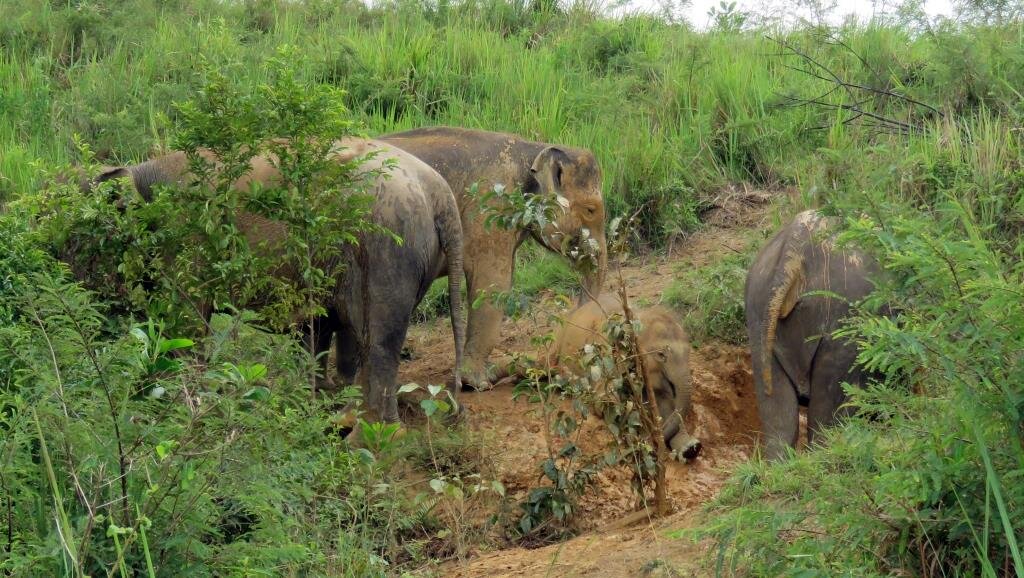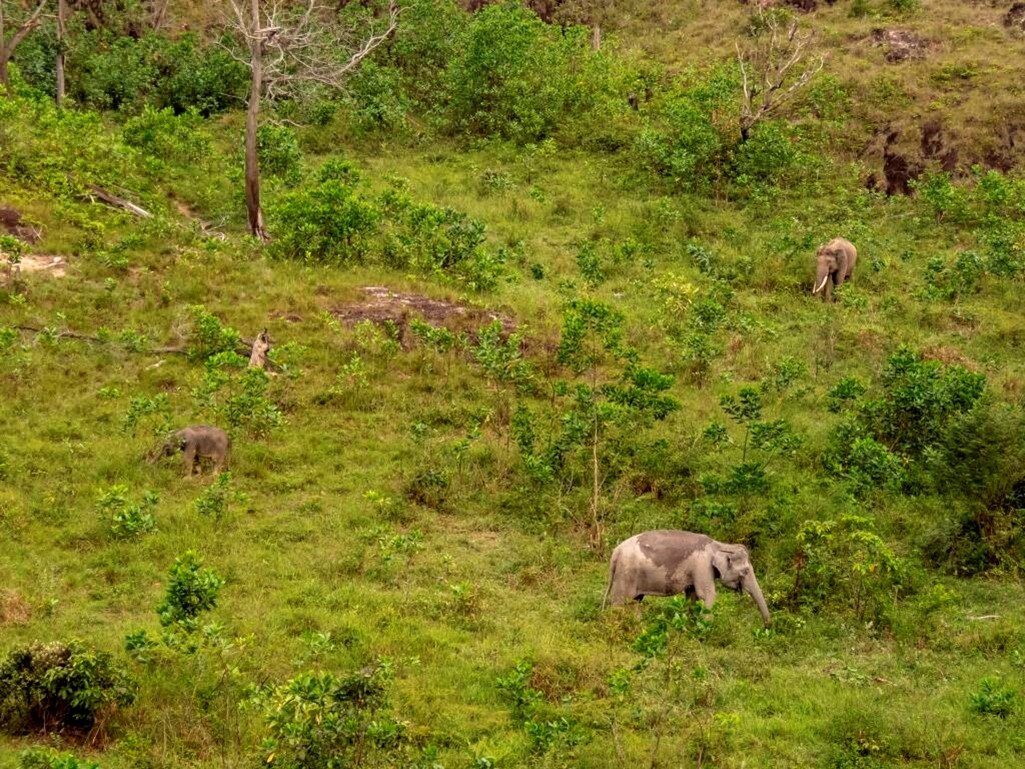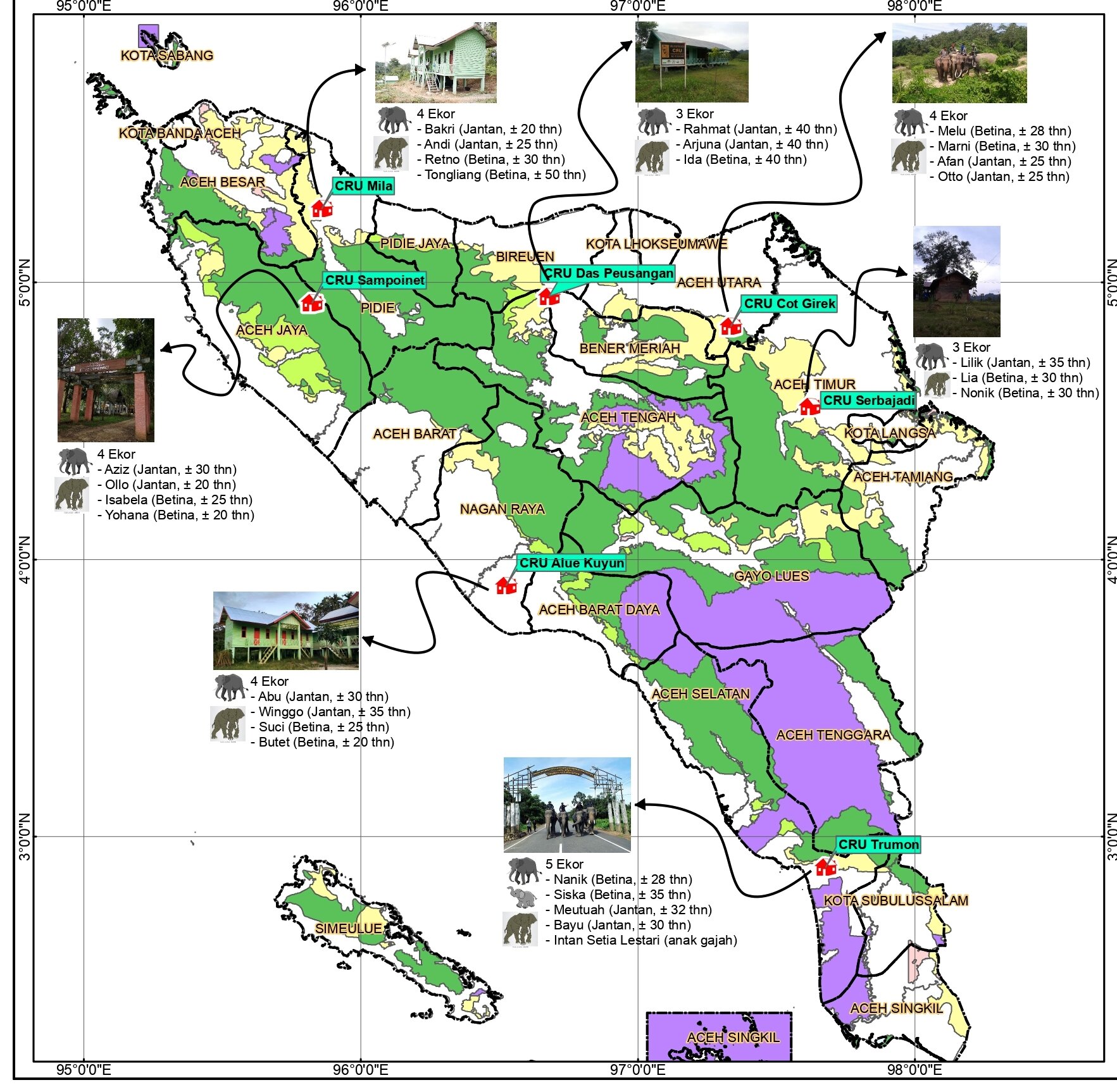
Our research: captive welfare
Behavioural Welfare Assessment Tool for Captive Elephants
Over recent years, the training of wild elephants for domestication, and control of captive elephants using bulhooks to instil fear and pain into the animal has come to the attention of many, with the realisation that this practice is cruel and outdated. Additionally, there has been much concern with zoos housing elephants, as these are highly intelligent and emotional creatures that require a high standard of welfare. Few studies have been undertaken to assess welfare levels in captive elephants or develop a standardised method for this purpose.
In 2016, Dr Lisa Yon from the University of Nottingham designed a new system of evaluating the welfare of captive elephants in UK zoos using behavioural observations. This ‘rapid behavioural welfare assessment tool’ was developed through consultation with experts in elephant behaviour and husbandry, identifying behavioural indicators of welfare to assess and monitor welfare levels. In 2019, this method was assessed in 5 UK zoos involving 29 individual elephants and has proven to be an effective way of measuring welfare. Thus, it was agreed that we should test this method in captive facilities in-situ, trialling it in centres in Sumatra. This will allow us to assess current behavioural welfare in captive elephants, develop a captive elephant management protocol to improve welfare levels and assess the effectiveness of these improvements over time.

Barumun Nagari Wildlife Sanctuary; the only true sanctuary for elephants in Sumatra.
Barumun Nagari Wildlife Sanctuary is located in Aek Godang, in the south Tapanuli Regency of north Sumatra. Much of the ancient forest has already disappeared from the region and much of the land now consists of small local farms and large-scale palm oil plantations. Originally, Barumun Nagari was also a palm oil plantation. Once Henri, the owner’s son inherited the business, he decided he wanted to give back to nature, and create a sanctuary for Sumatra’s endemic wildlife to live a pain free, happy existence. In 2015, Barumun Nagari Wildlife Sanctuary was formed and it is now home to 15 Critically Endangered Sumatran elephants; 3 adult males, 11 females and 3 babies who are now just over 1 year old. These elephants were rescued from locations all over Sumatra for various reasons, mostly due to poor health or underfunding/overcrowding. No bulhooks are used on the elephants, and all mahouts are learning positive training and reinforcement methods. The elephants are taken out into different areas each day to forage and roam as naturally as possible, each with their own mahout. They are also aiming towards a chain free facility, but at the moment, males are chained for mahout safety, and some individuals are chained at night whilst they raise enough money to build suitable night time enclosures for all the individuals. Barumun is open for tourists but it is on a visual basis only, no riding or washing of the elephants, only observing. This place is Sumatra’s only ethical elephant facility.
Behavioural welfare study and welfare scores
In February 2020 the ‘Elephant Behavioural Welfare Assessment Tool’ was trialled outside of the UK on the 15 captive Sumatran elephants at Barumun Nagari. The assessment is split into 3 sections: A ‘qualitative’ behavioural assessment where specific behavioural states are assessed and scored, a daytime behavioural assessment where all behaviours are recorded for 3 consecutive days, and a single overnight behavioural assessment. The assessment was conducted on all 15 elephants (including the babies) over a 3-week period in February 2020.
All 15 elephants scored highly on the behavioural welfare assessment tool. The elephants seemed at ease in their environment, were not wary, positively interacted with others and show very low (mostly no) stereotypy behaviours (a behavioural sign of stress in most captive animals) throughout this study. This shows that the elephants at Barumun Nagari exhibit a high level of welfare, and how good husbandry, positive reinforcement and proper care of the elephants have aided in providing a high welfare standard. According to this assessment, Barumun Nagari has shown to provide high levels of welfare to its captive elephants. The techniques and practices used here have a positive effect on the wellbeing of the elephants, and this should be used as a good example for other captive elephant facilities throughout Sumatra. The facility is not perfect, and is still working on improving the standard of welfare here, but, it is heading in the right direction and w continue to support this centre.
Conservation Response Units - CRU’s - in Aceh
Due to the high conflict between elephants and humans, and the recent increase in the number of illegal killings of elephants throughout Aceh provinces, the Conservation and Natural Resources Centre (BKSDA), the Aceh Provincial Forest Service and the District Government in Aceh, assisted by Fauna and Flora international (FFI) decided to establish several Conservation Response Units (CRU’s) across Aceh to assist with conflict in these areas. This research will focus firstly on the 7 CRU’s located in Aceh. These are: CRU Alue Kuyun in Nagan Raya district, CRU Sampoinet in Aceh Jaya, CRU Mila in Aceh Besar, CRU Das Peusangan in Bireuen, CRU Cot Girek in Aceh Utara and CRU Serbajadi in Aceh Timur. These captive elephant facilities hold between 3-5 individual elephants, much lower numbers than are held in CRU units within the south of Sumatra.
The behavioural welfare assessment will be undertaken alongside a student from Syiah Kuala University as part of their final dissertations. This will allow students to learn about behavioural studies and how to undertake practical elephant behavioural observations, and learn more regarding the plight of the Sumatran elephant. So far, this behavioural welfare assessment has been undertaken at Sampoinet CRU, located in the Aceh Jaya district.
Sampoiniet Conservation Response Unit
CRU Sampoiniet was the first CRU in Aceh, and was officially established in July 2008. Four ‘tame’ elephants from the Saree Elephant Training Centre (PLG) located in Aceh Besar, were brought to the CRU to assist in elephant conflict incidences and patrol the Ulu Masen area. However, in 2012, problems arose between the CRU team and the local community, when a wild elephant was found to have been killed in the Sampoiniet district. Due to increased tension with the community and for the safety of the mahouts, BKSDA decided to repatriate the elephants and their mahouts back to Saree PLG. However, once the CRU ceased to exist, elephant conflicts with the community increased once again, and to a much higher degree. The farmers could no longer work due to this increased conflict and on March 28th 2016, BKSDA decided to re-open the CRU. Today, there are four elephants, four mahouts and 16 rangers working at the facility. In addition to aid in conflict incidences, they carry out educational tourism for the locals on weekends. However, this includes riding activities.
In February 2020, a week was spent at Sampoiniet CRU to undertake the behavioural welfare assessment on their four elephants: Johana, a 22 year old female, Isabela, a 36-year-old female, Olo, a 27 year old male and Aziz, a 32 year old male. During the study, all elephants were housed together in a fenced area apart from Aziz, who was chained on an approximately 20m chain outside the fenced area due to him being in musht, therefore to prevent any aggression or injury to the other elephants. Apart from twice a day when each elephant was taken to the river to bath and drink, they spent the rest of their time within the small fenced enclosure. There was no food or water supplied to them in this area and food was scheduled twice a day. Overall, the elephants were generally in good overall health, and have the opportunity to socialise with each other. However, stereotypical behaviour was seen to be performed be every elephant, most frequently in the late evening and early morning. They also seemed bored and agitated in the day due to lack of opportunities to forage. With a small amount of effort, such as providing a constant water source and browse, this could greatly improve the welfare of the elephants here. This will be discussed with the staff and hopefully we can work together to help make these improvements.










